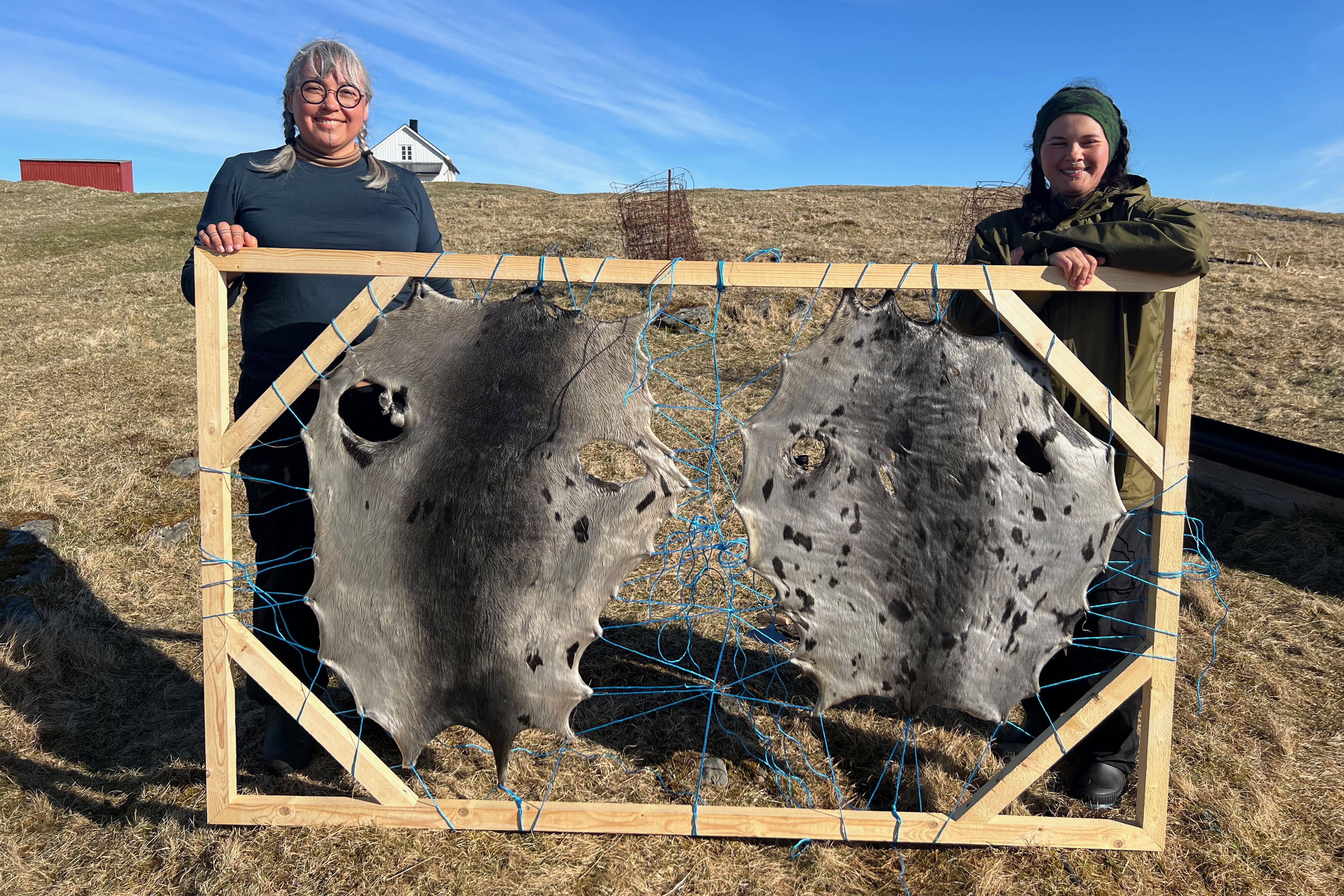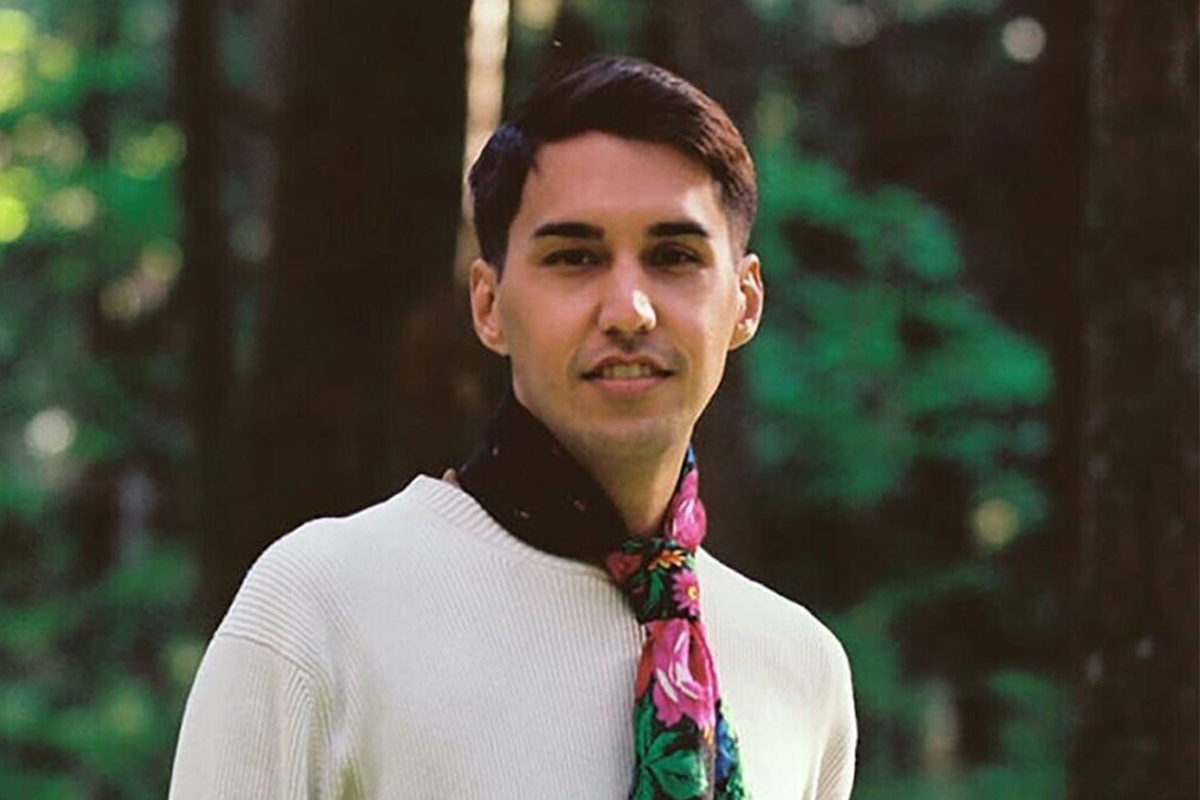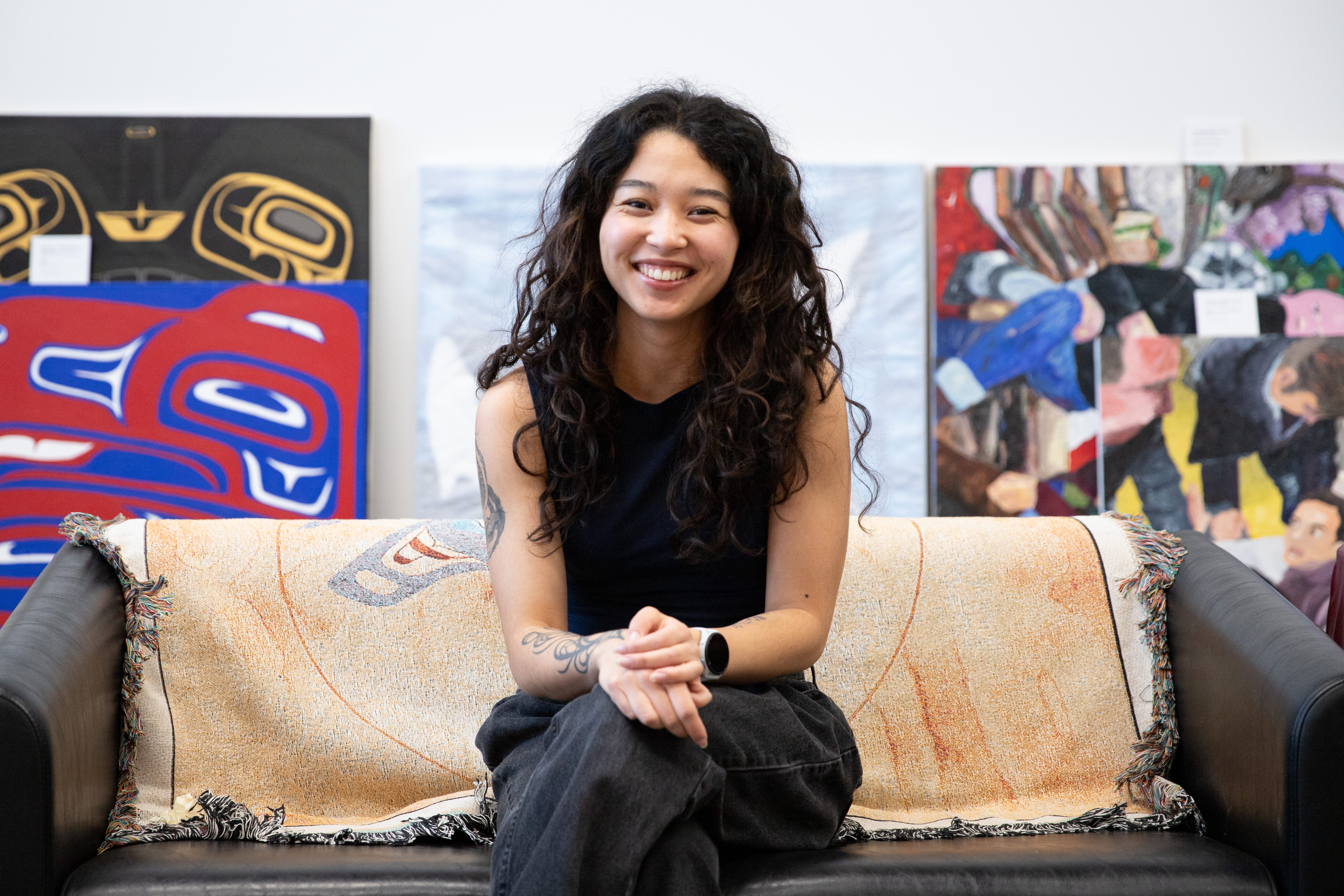Tipi Workshop Brings Connection, Community and Healing to Indigenous Students at Âé¶ṗÊÓÆṁ
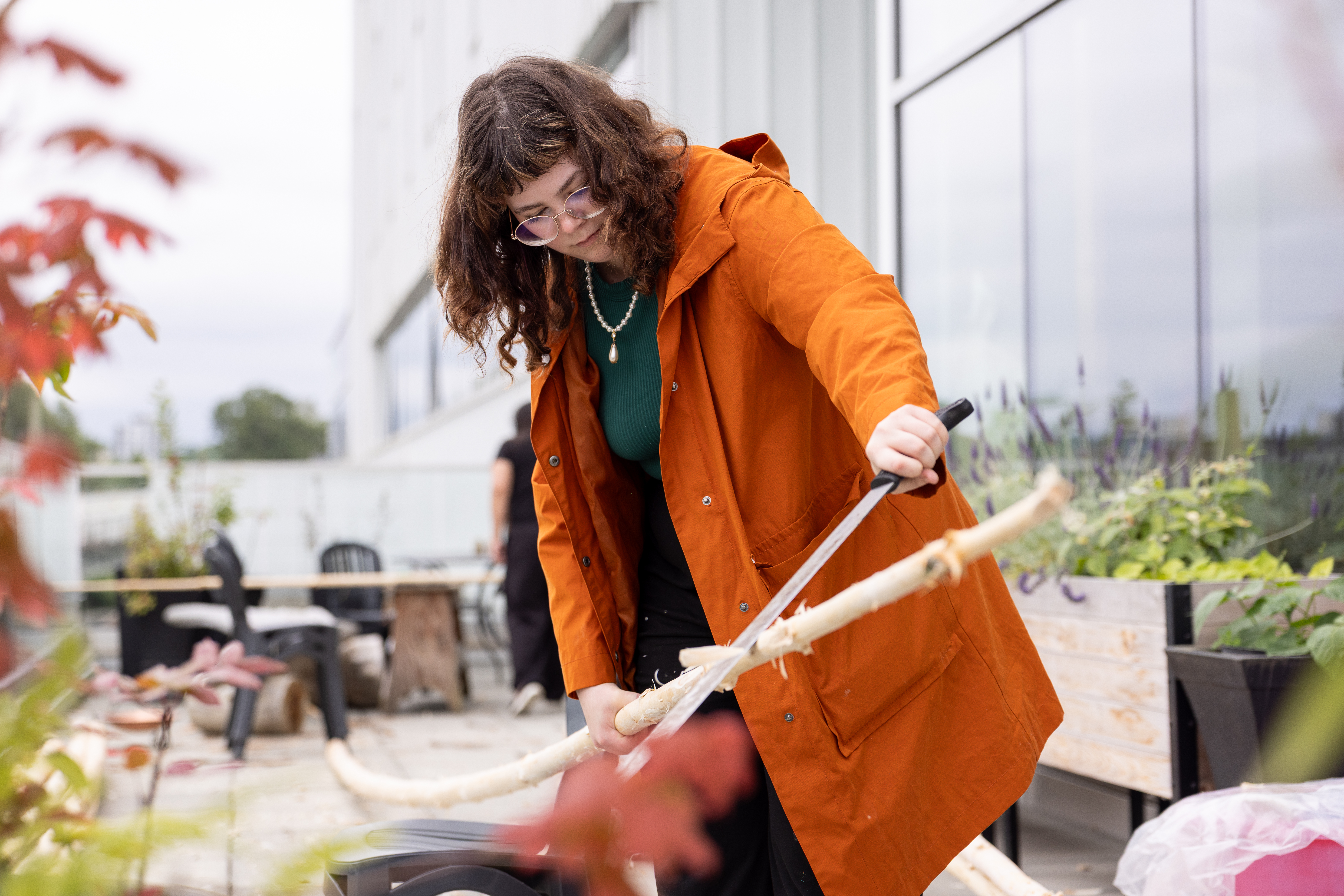
Isabelle Jarman trims fir poles at the Aboriginal Gathering Place at Âé¶ṗÊÓÆṁ for use in the tipi. (Photo by Perrin Grauer)
Posted on | Updated
Led by âTipi Joeâ Lanceley, the week-long project saw students gather at the Aboriginal Gathering Place to learn a millennia-old Indigenous material practice.
A group of students and alums learned the art of building a traditional tipi during a recent workshop at the Aboriginal Gathering Place (AGP) at Âé¶ṗÊÓÆṁ (Âé¶ṗÊÓÆṁ).
Artist , who will begin her fourth year in Âé¶ṗÊÓÆṁâs Illustration program in September, says the project provided an opportunity for both personal and collective growth.
âI was surprised something like making a tipi was even possible at Emily Carr University,â Isabelle says. âI was keen to participate not only to strengthen the community within Emily Carr and the AGP, but also to find healing with myself. I needed a little healing and this project was really good medicine for me. I was thrilled to be a part of it.â
Led by Joe âTipi Joeâ Lanceley, member of Mistawasis First Nation and founder of , the week-long workshop covered the entire tipi-making process. In addition to Isabelle, artists (MFA 2026), (BFA 2026), (BFA 2026), (BFA 2025) and (MFA 2025) participated in the workshop.
Each group member participated in every step, including travelling to Denman Island to harvest and process trees for poles, sewing and painting the canvas covering, and raising the final structure. AGP staff members Kajola Morewood, Sydney Pascal, Daina Warren, and project assistants (BFA 2025) and (BFA 2024) also participated in pole harvesting alongside Âé¶ṗÊÓÆṁ staff member Sharon Bayly and Jenniferâs son, Talon.
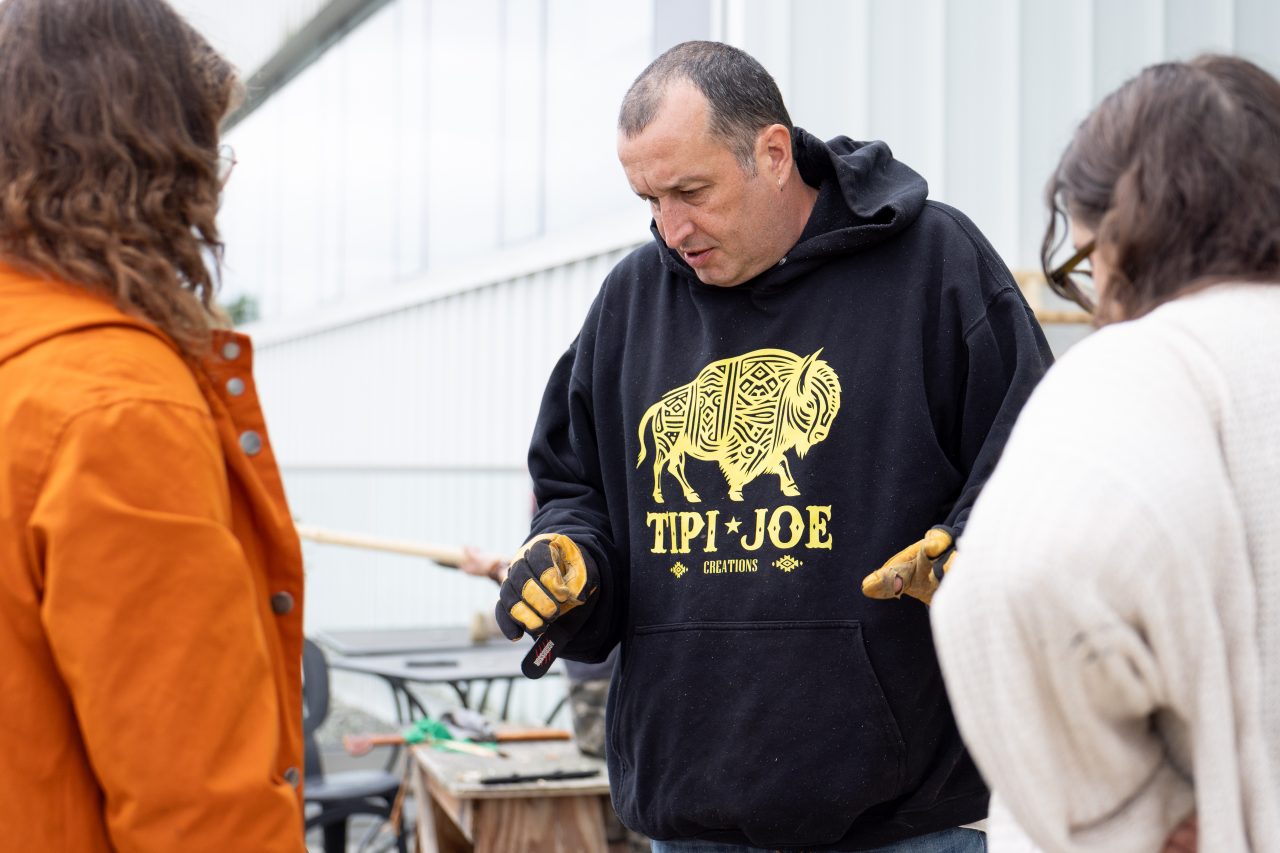
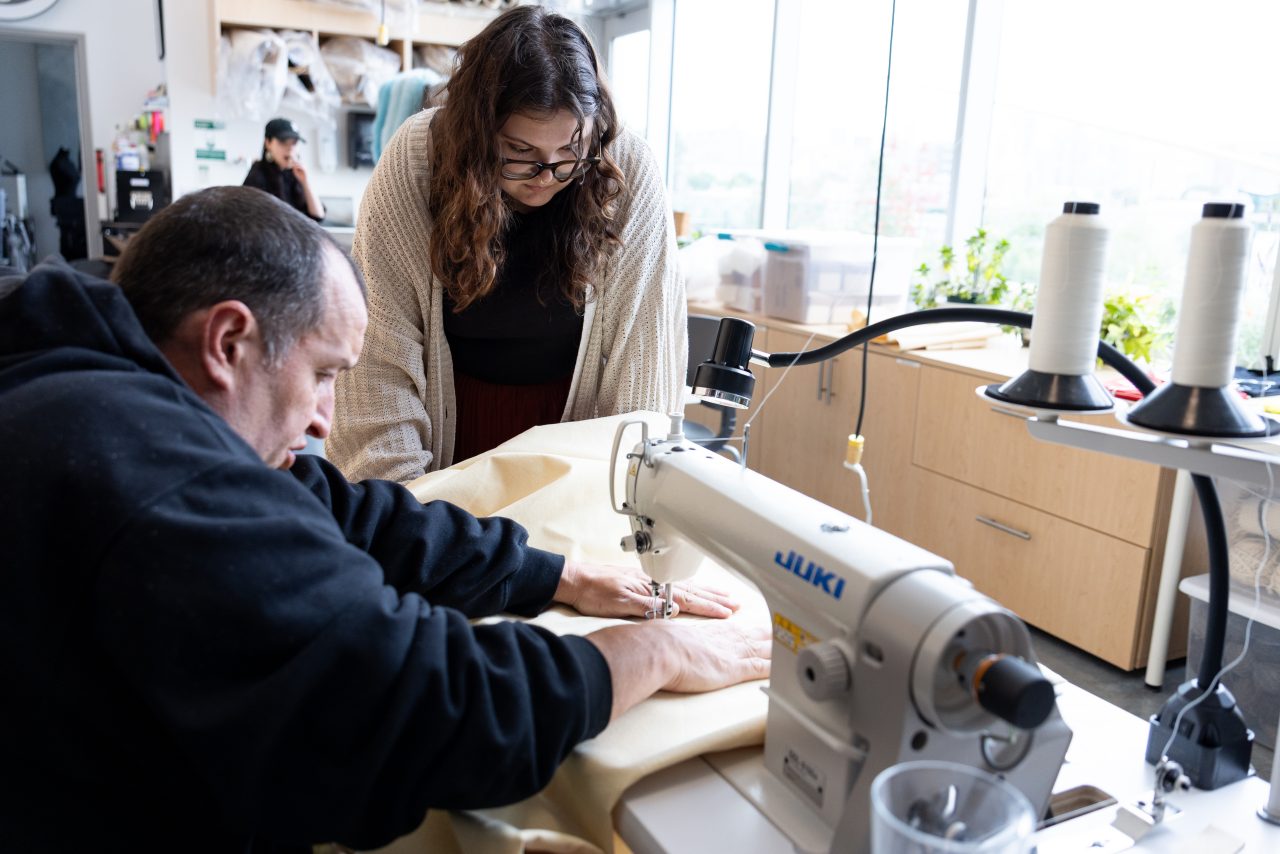
Top: Tipi Joe chats with Isabelle Jarman and Rylee Taje on the patio of the AGP. | Bottom: Joe gives Rylee a sewing demonstration for the canvas panels that will eventually cover the tipi. (Photos by Perrin Grauer)
Truly Perfect Thing
Joe says the knowledge of tipi building was, until recently, on the verge of disappearing due to the broader decimation of Indigenous cultures by colonial harms including the Sixties Scoop and residential schools. But over more than three decades of practice, Joe has taught the practice to thousands of students, many of them non-Indigenous.
âItâs something Iâm willing to share with anyone who wants to learn,â he says. âWe often forget the tipi is found all around the world and is still in continuous use. It doesnât just belong to us as Indigenous people, although we are the biggest users of the technology.â
Joeâs openness to knowledge-sharing is part of his broader perspective on Indigenous technologies.
âThe tipi is one of the only truly perfect things youâll encounter. Itâs been in use for over 10,000 years, and you just cannot improve on it,â he says. âWeâve continuously adopted Indigenous technology because itâs superior. Everyone knows what a toboggan is, or snowshoes, kayaks or canoes. When you see a car with a kayak on top, you donât think that person must really be into Indigenous culture. Everyone uses it because itâs so perfect. We donât romanticize it. But for some reason, we do that with the tipi.â

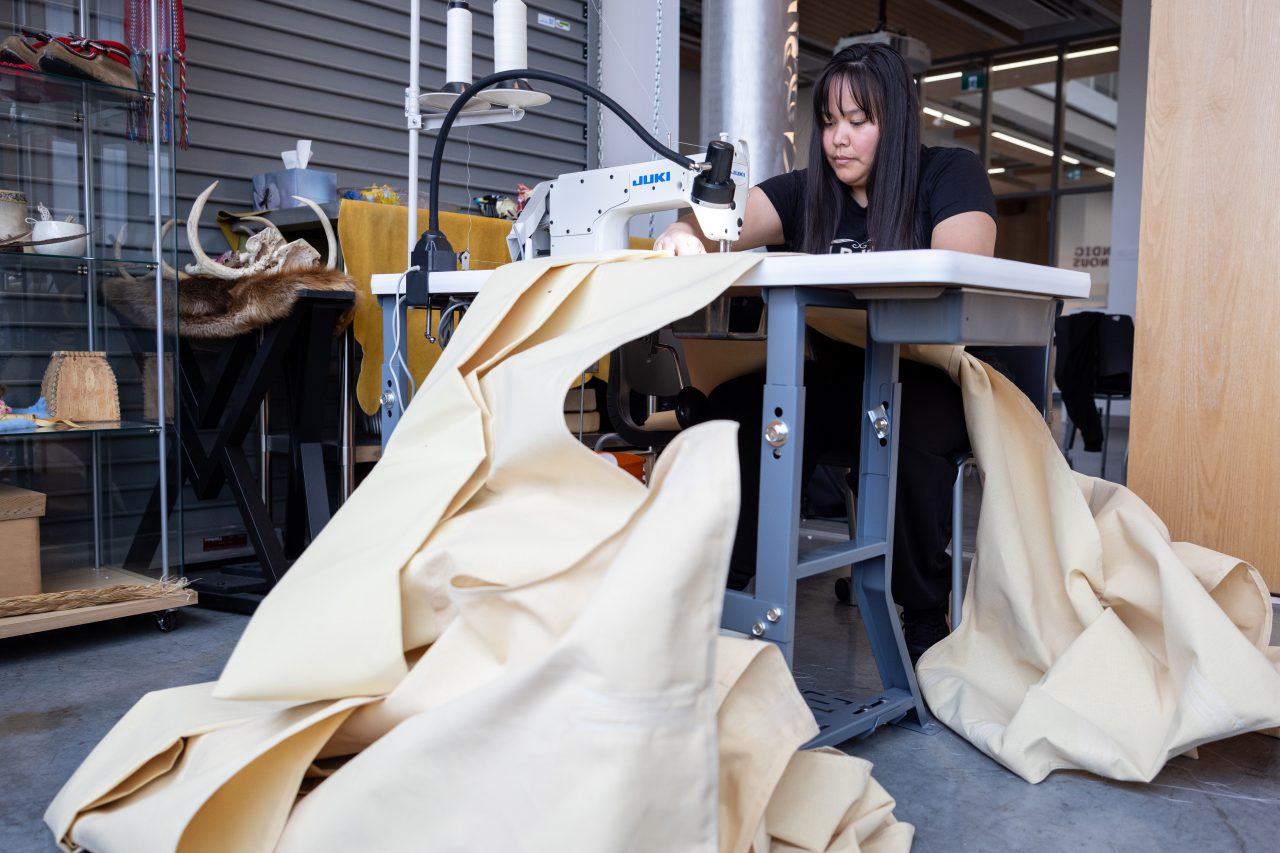
Top: Naomi Watkins (left) and Sydney Mercredi process fir poles on the AGP patio. | Bottom: Alysha Johnny Hawkins sews canvas at the AGP. (Photos by Perrin Grauer)
It Comes From All of Us
Prior to the tipi raising, the group painted its canvas covering. Isabelle says their motifs aimed to capture the artistsâ many influences, as well as the character of the land on which Âé¶ṗÊÓÆṁ is located. Cedar, salmon and the Twin Sister mountains (Ch'Ãch'iyÃẃy ElxÌḟwÃáẁṁn in the Squamish language, also known as The Lions) adorn the tipi alongside red triangles representing sun rays shining on the water.
Daina Warren, Executive Director, Indigenous Initiatives at Âé¶ṗÊÓÆṁ, says the tipi is an embodiment of the AGPâs mission. Its creation involved bringing together artists from different Nations with different practices and knowledge of diverse material traditions.
âThey all bring different ways of knowing, and theyâre doing the work in an urban setting and for a diverse group of people,â she says. âI loved hearing how Joe tried to get everyone to feel the immensity of this tipi. Itâs special because itâs here on the West Coast, it comes from all of us, and it speaks to the urban experience of being here together and the role that Âé¶ṗÊÓÆṁ plays in that togetherness.â
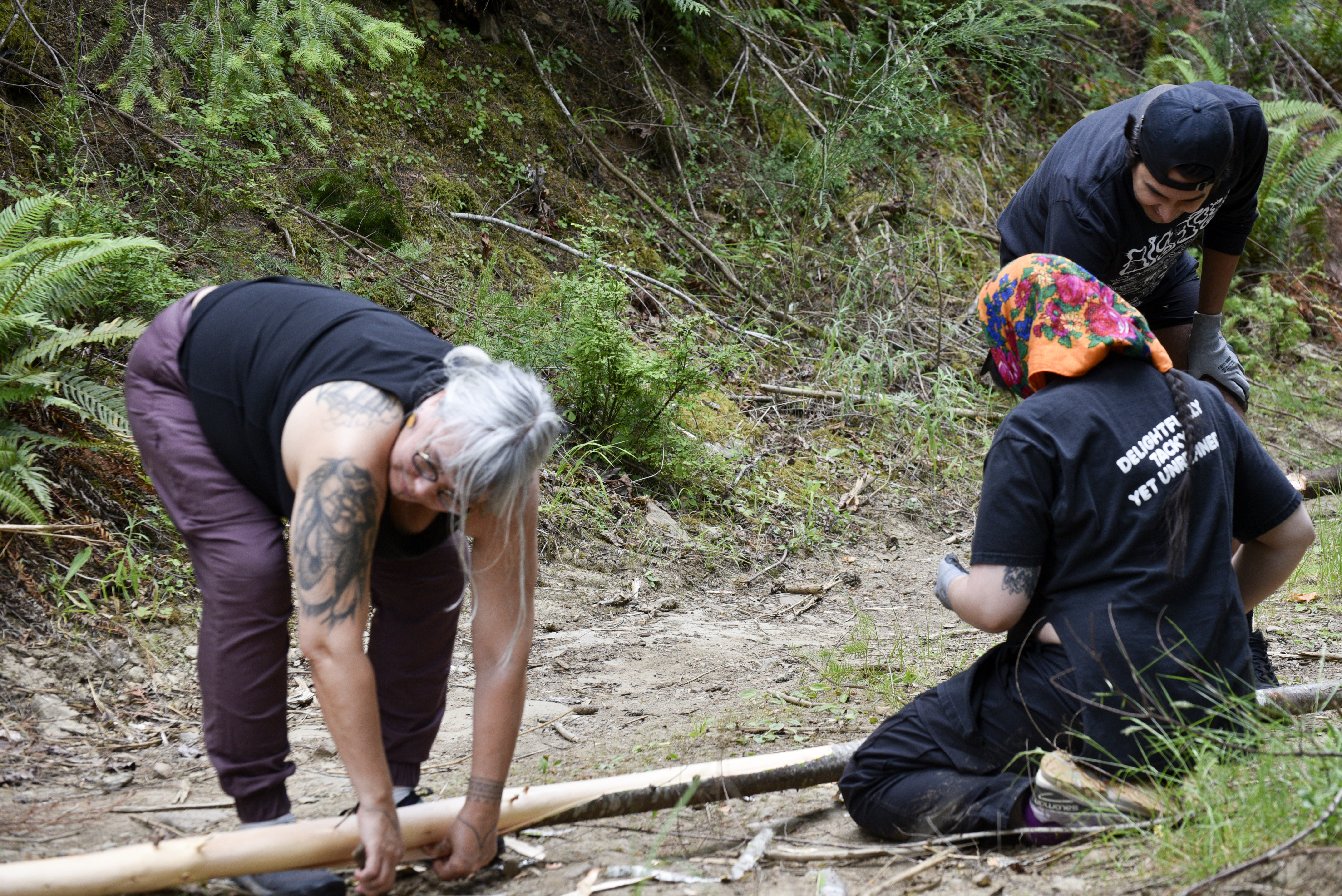
(From L): Kajola Morewood, Leanne Inuarak-Dall and Vance Wright process fir poles on Denman Island. (Photo by Sydney Pascal / courtesy AGP)

(From L): Sydney Mercredi, Jennifer Mitchell, Talon Mitchell and Sharon Bayly process fir poles on Denman Island. (Photo by Sydney Pascal / courtesy AGP)
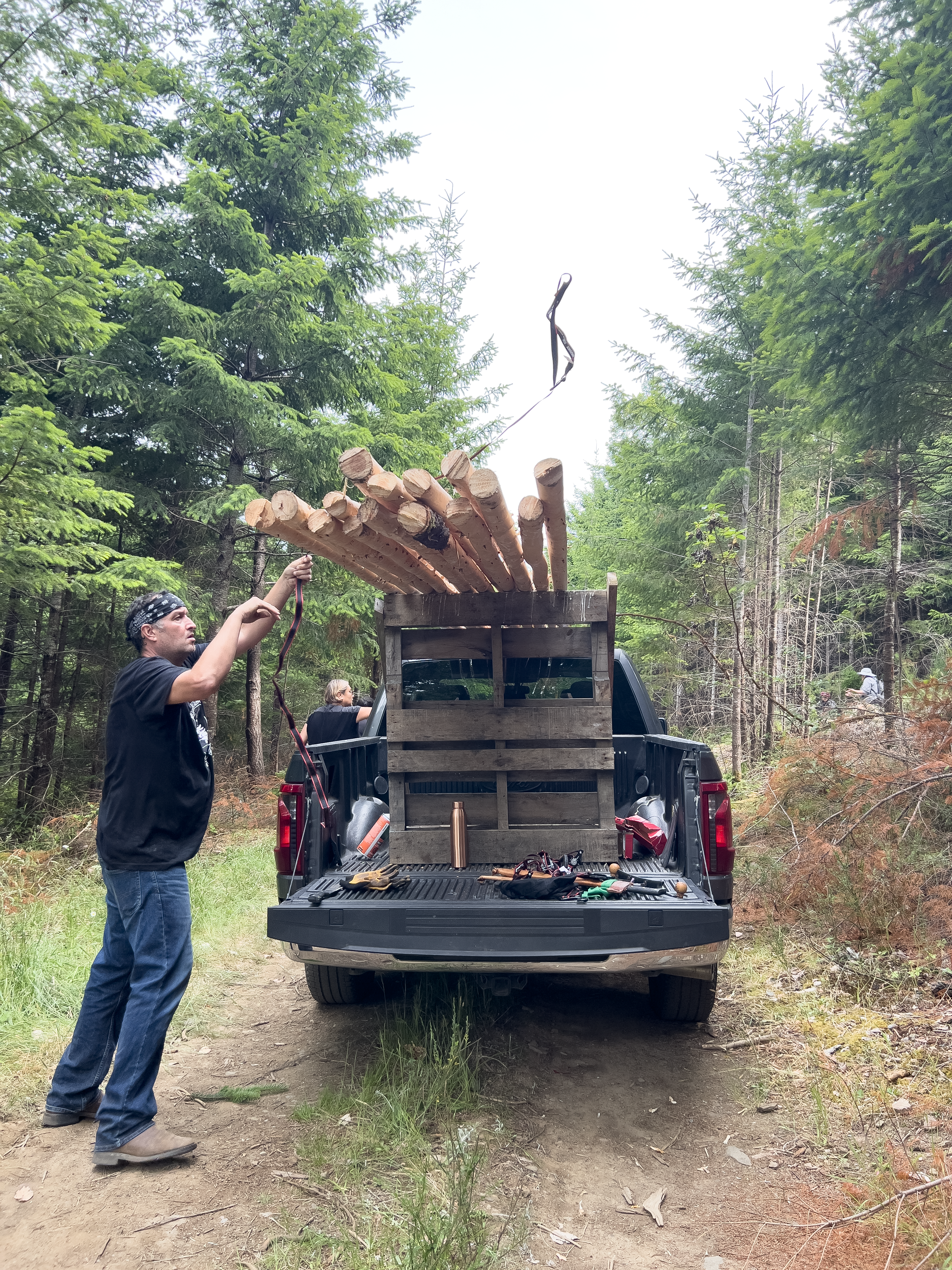
(From L): Tipi Joe loads the truck to bring the poles back to Vancouver. (Photo by Sydney Pascal / courtesy AGP)
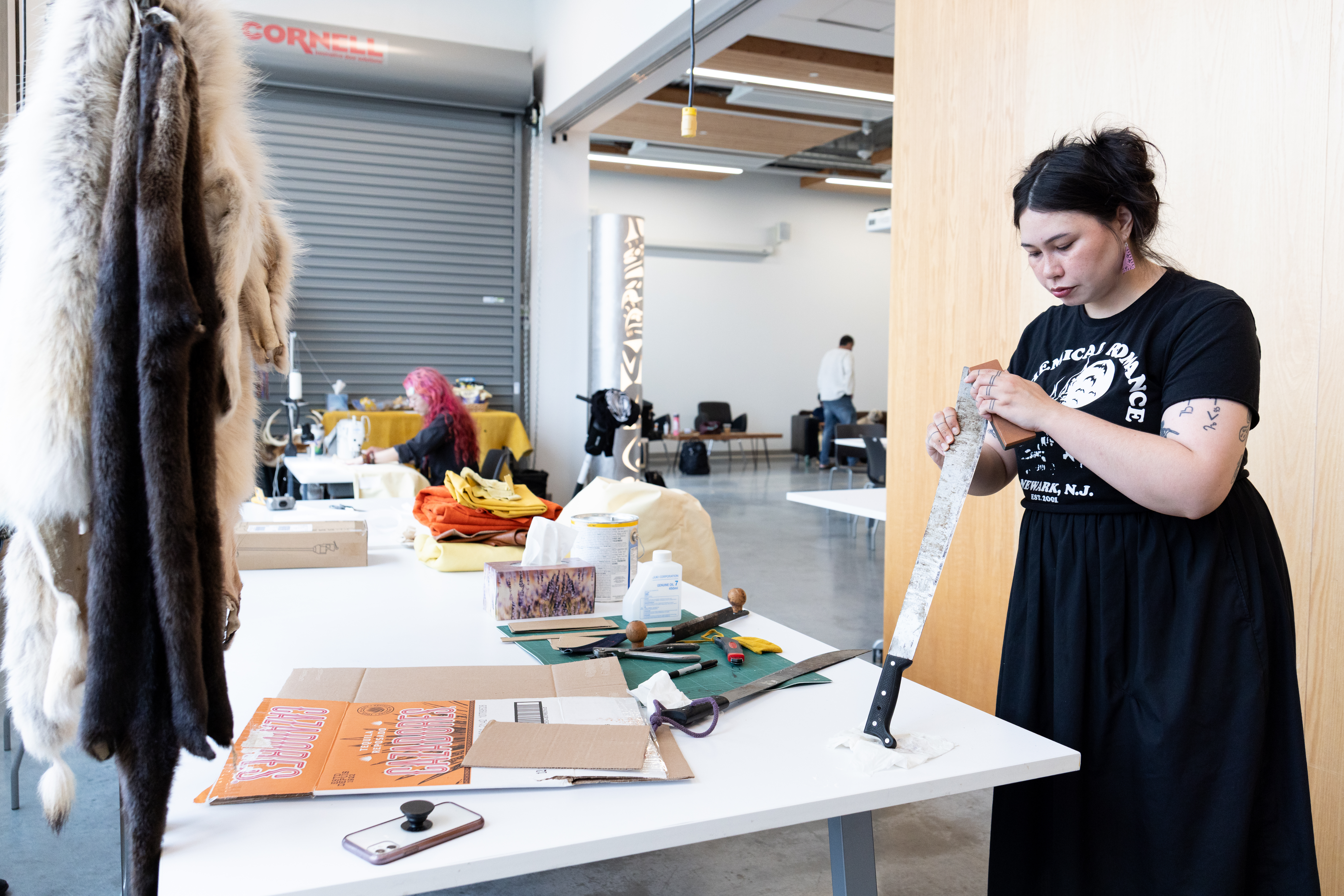
Leanne Inuarak-Dall sharpens a machete at the AGP. (Photo by Perrin Grauer)
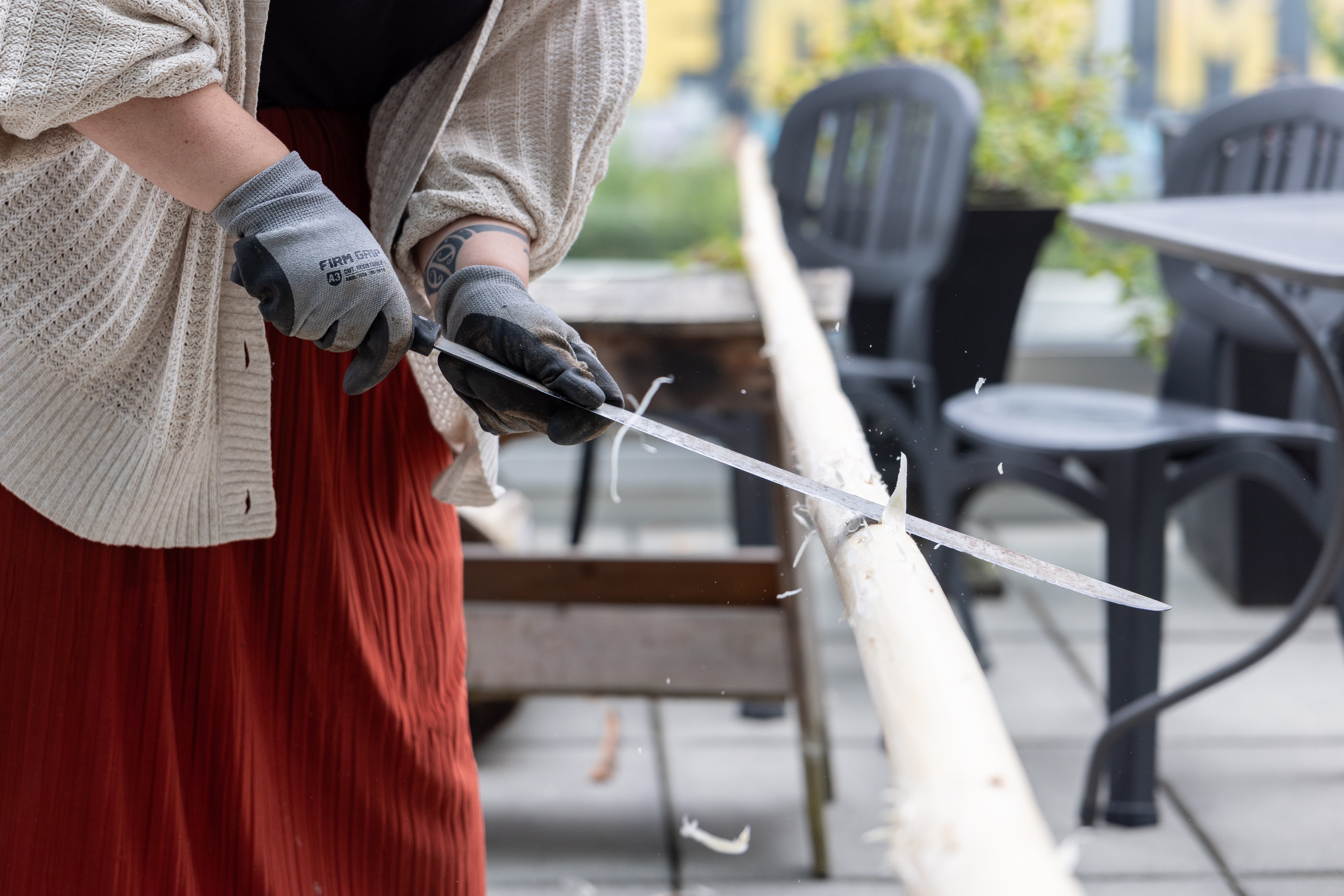
Rylee Taje works on the patio at the AGP. (Photo by Perrin Grauer)
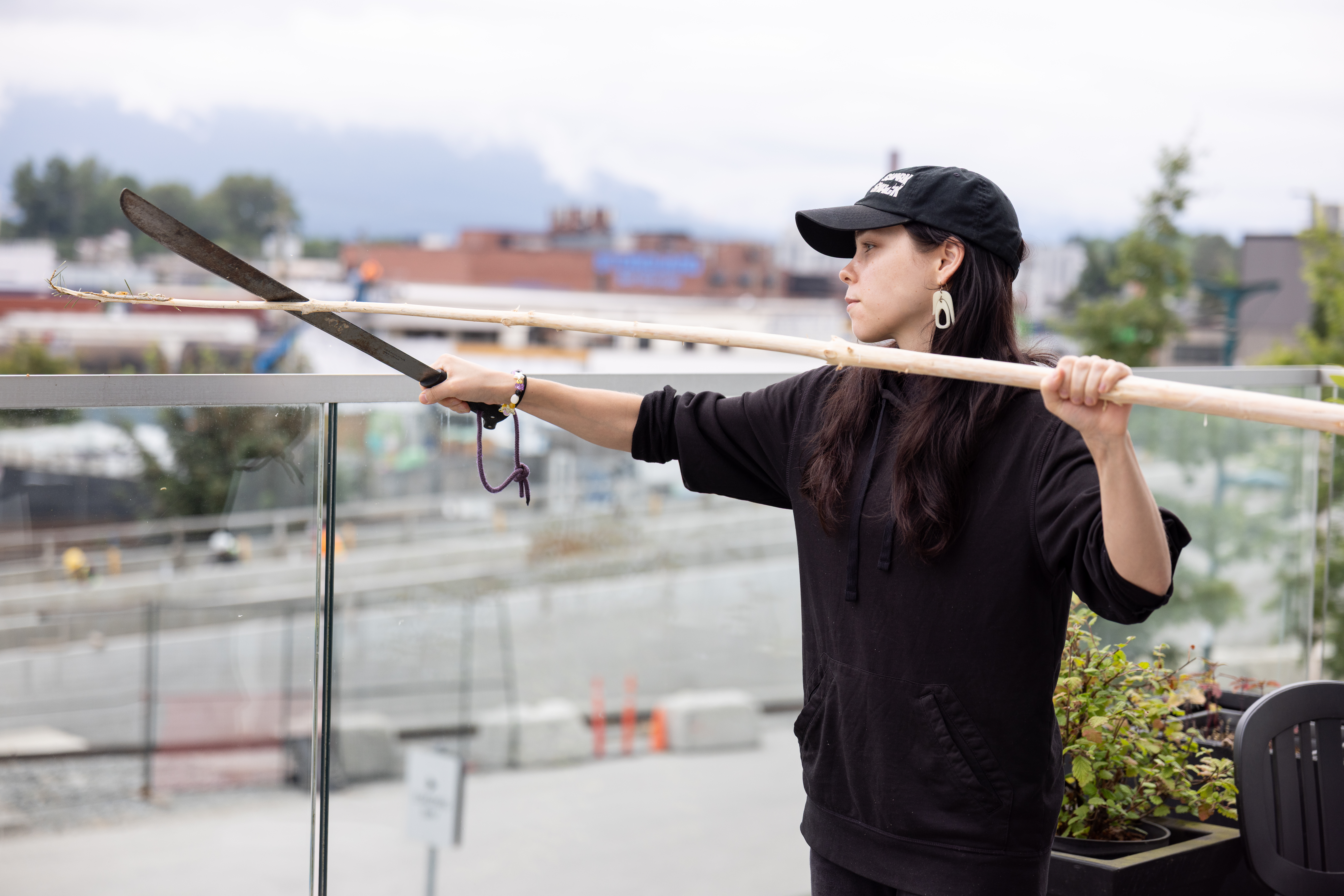
Naomi Watkins works on the patio at the AGP. (Photo by Perrin Grauer)
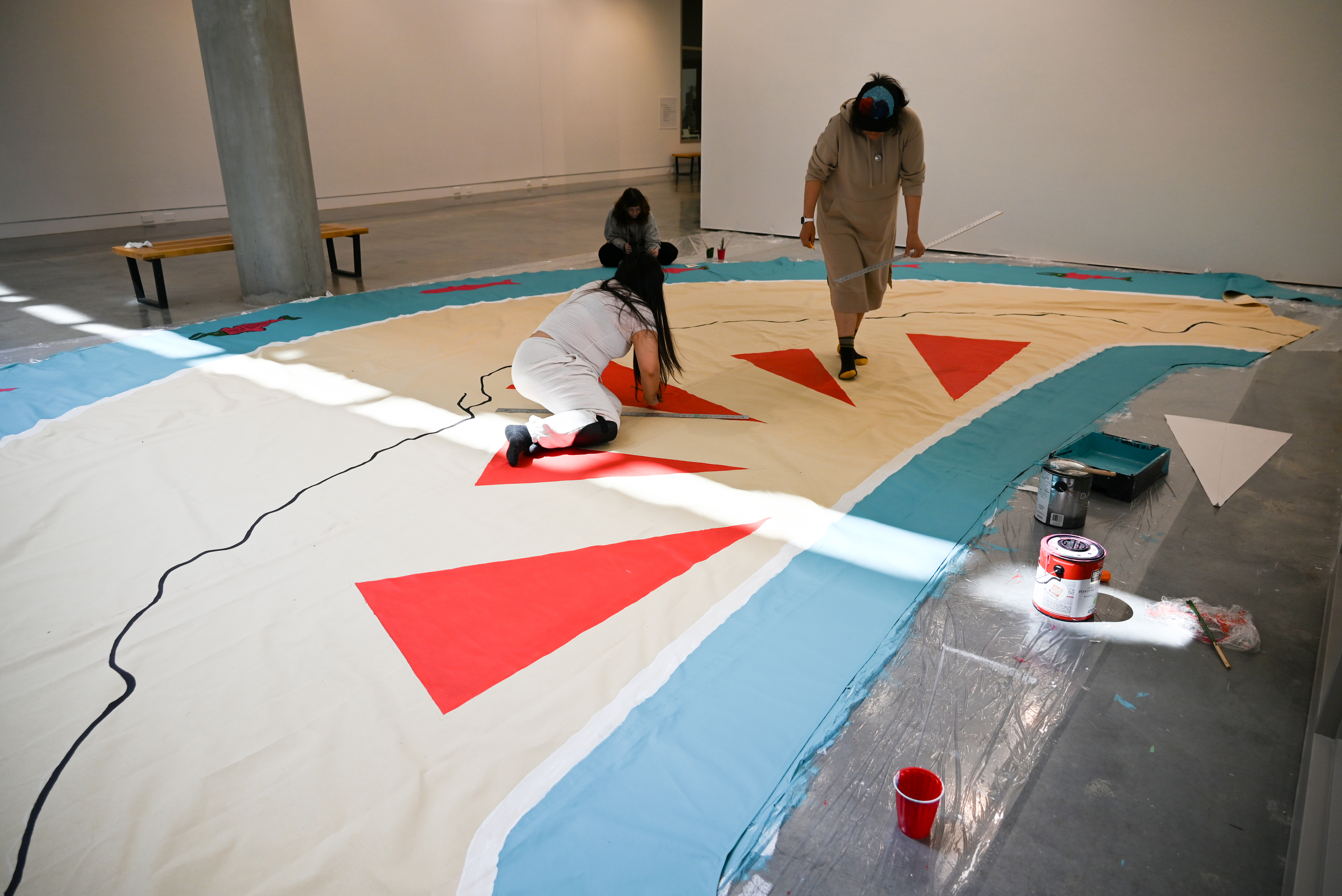
(From L): Alysha Johnny Hawkins, Isabelle Jarman and Jennifer Mitchell paint the canvas covering. (Photo by Sydney Pascal / courtesy the AGP)
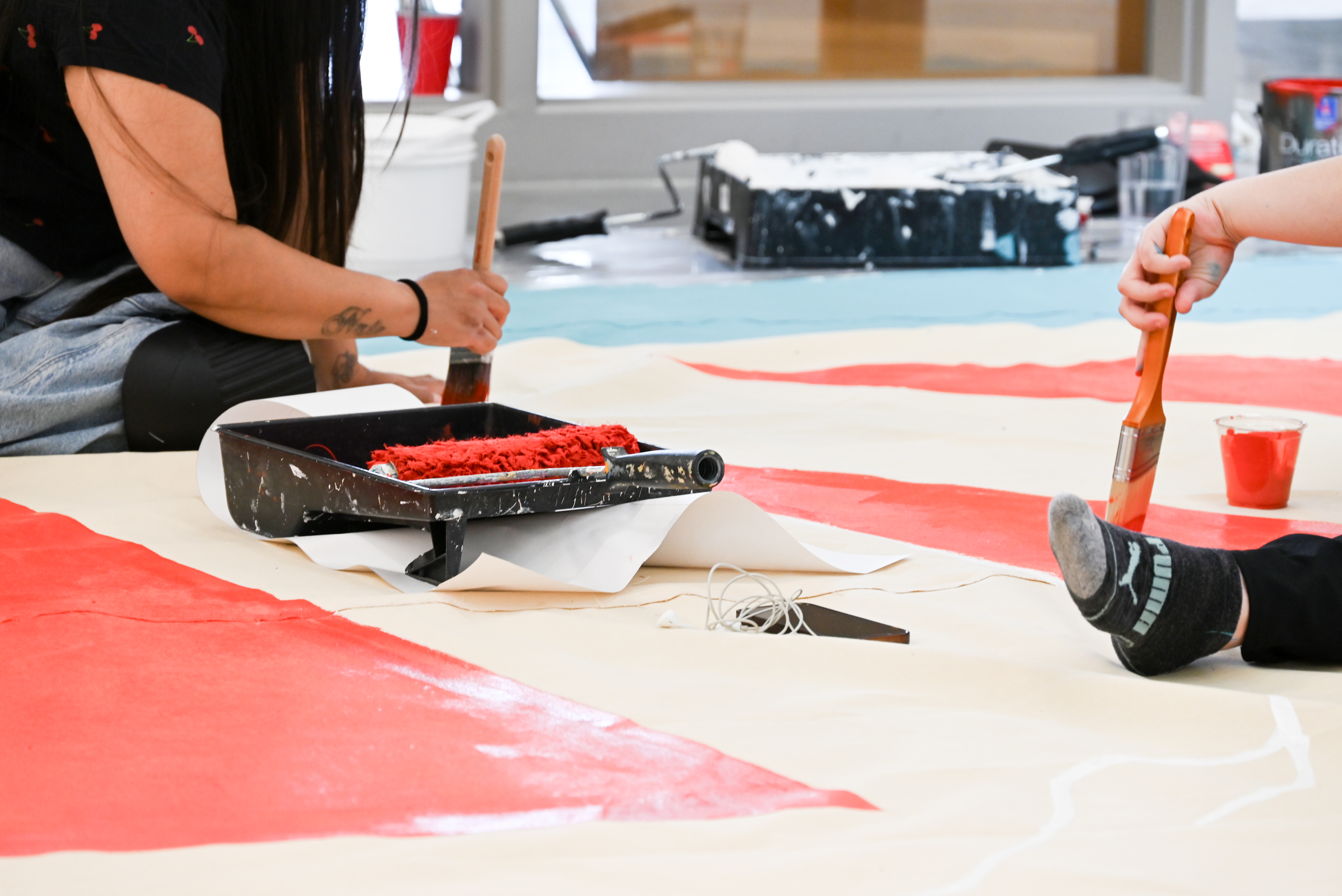
(From L): Alysha Johnny Hawkins and Isabelle Jarman paint the canvas covering. (Photo by Sydney Pascal / courtesy the AGP)
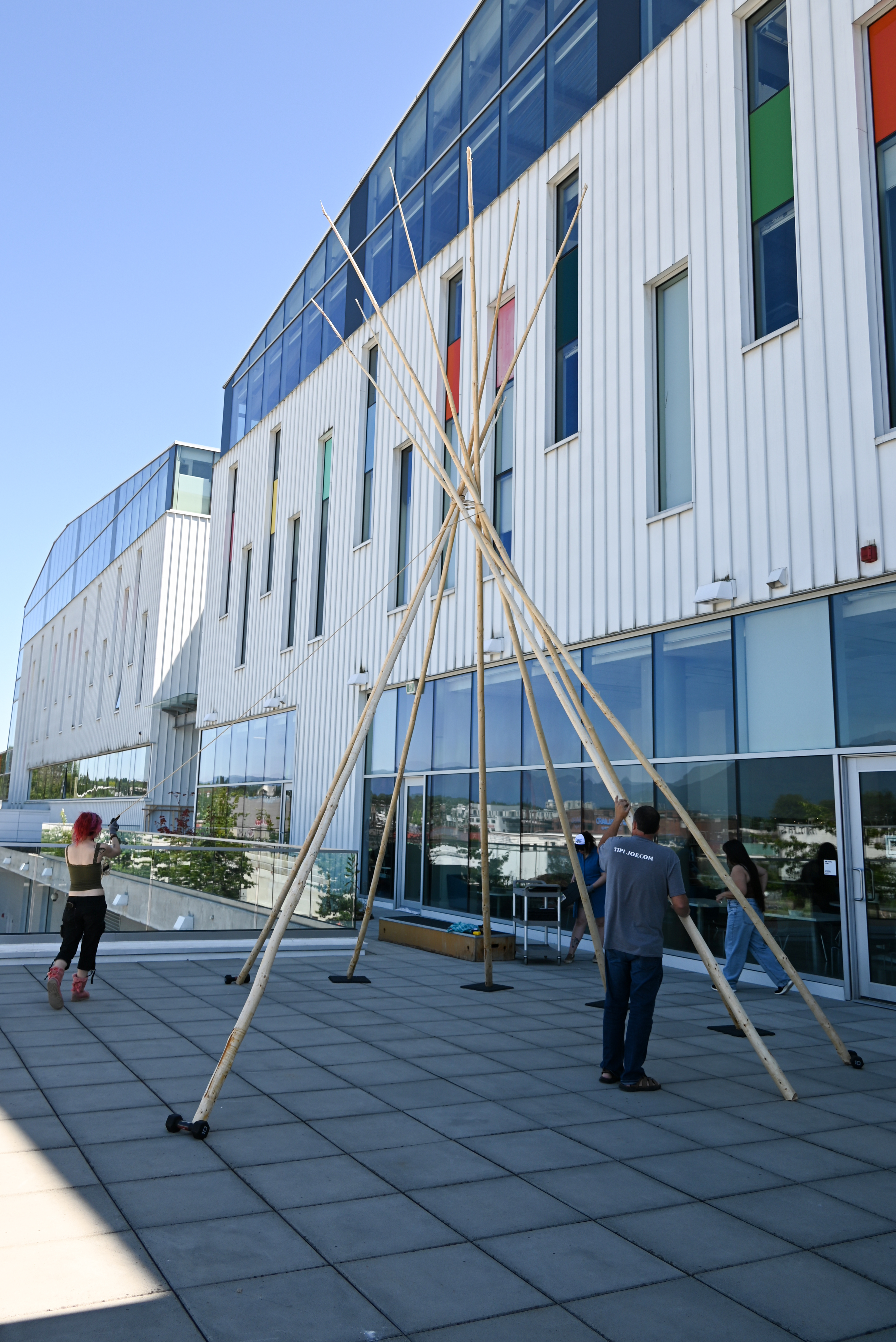
The tipi raising begins on the north patio at Âé¶ṗÊÓÆṁ. (Photo by Sydney Pascal / courtesy the AGP)

The completed tipi. (Photo by Sydney Pascal / courtesy the AGP)
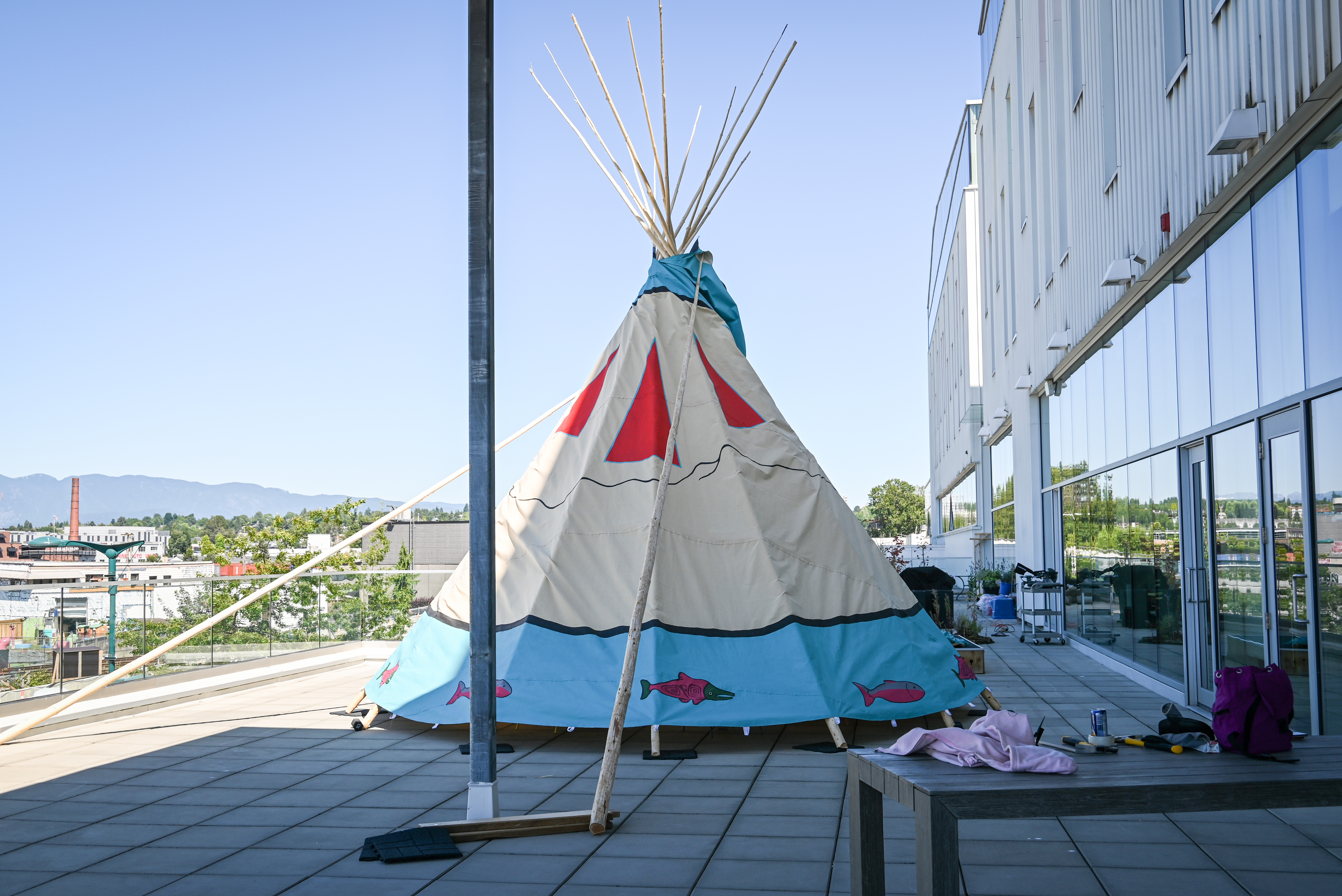
The completed tipi. (Photo by Sydney Pascal / courtesy the AGP)
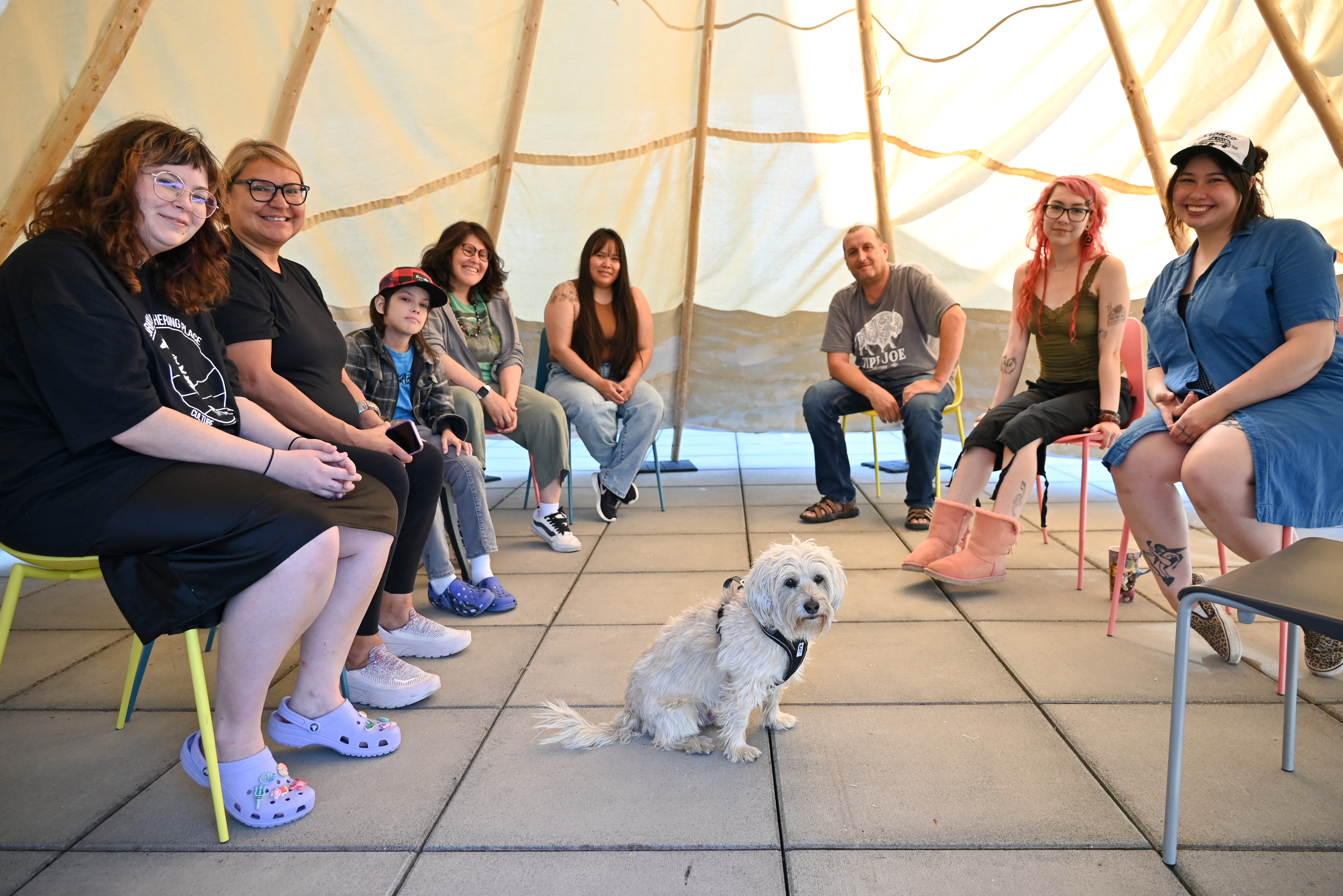
(From L): Isabelle Jarman, Daina Warren, Talon Mitchell, Jennifer Mitchell, Alysha Johnny Hawkins, Tipi Joe, Sydney Mercredi, Leanne Inuarak-Dall and Julio the dog. (Photo by Sydney Pascal / courtesy the AGP)
Somewhere Deep Within
Joe notes that the fact the participants comprised a group of primarily woman artists reflects an important aspect of the tipiâs history.
âIn our belief system, the tipi traditionally belongs to women and embodies many teachings connected to their experiences and bodies,â he says. âItâs not my role as a man to try to teach those things, but I said to the group that they might experience an emotional response to the work, because itâs somewhere deep within them â everything weâre doing could have been part of what their ancestors experienced.â
Isabelle echoes Joeâs observation, noting her own ancestors likely built and dwelled in tipis. And once she and her fellow participants had raised the finished structure on Âé¶ṗÊÓÆṁâs north patio, she had a vivid recollection of a camping trip sheâd taken as a youth in foster care.
âThe moment I went inside, sitting in a circle with everyone, I thought, âOh my goodness, this is literally what I did when I was a child. We slept in tipis like this one. This feels so right to me. This is what I was supposed to do,ââ she recalls. âAnd I was just so glad I signed up.â
The tipi will be raised again in August 2025 for student exploration during Orientation Week. Look for it on the north patio outside the cafeteria.
